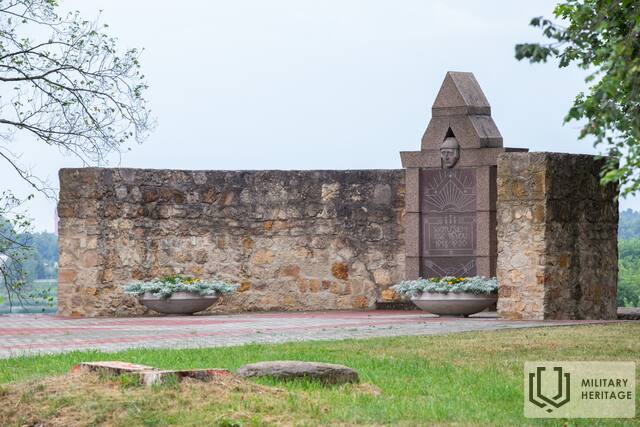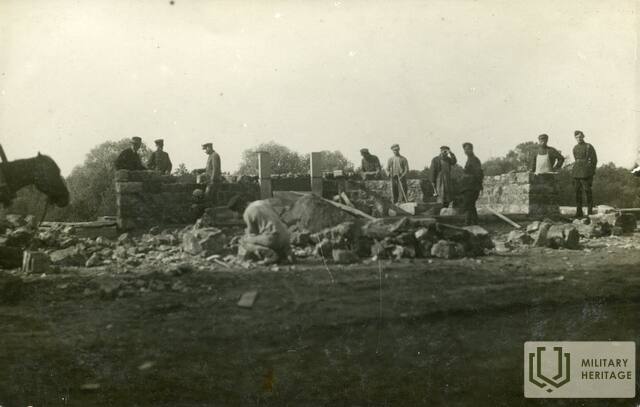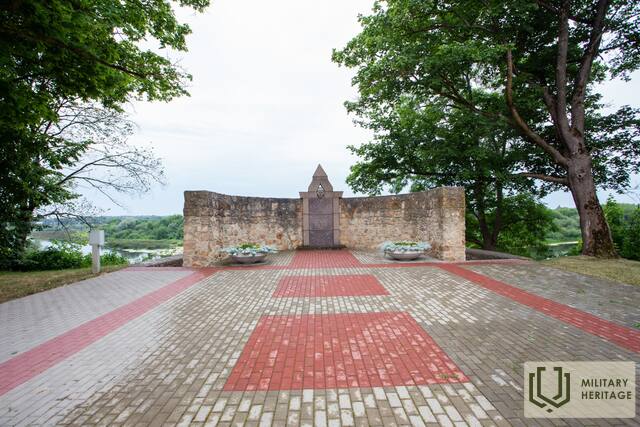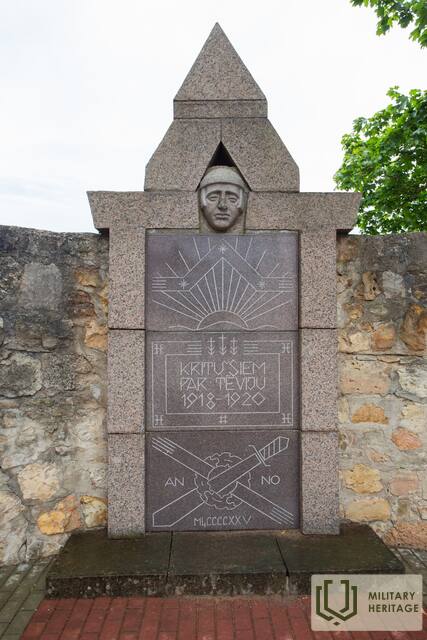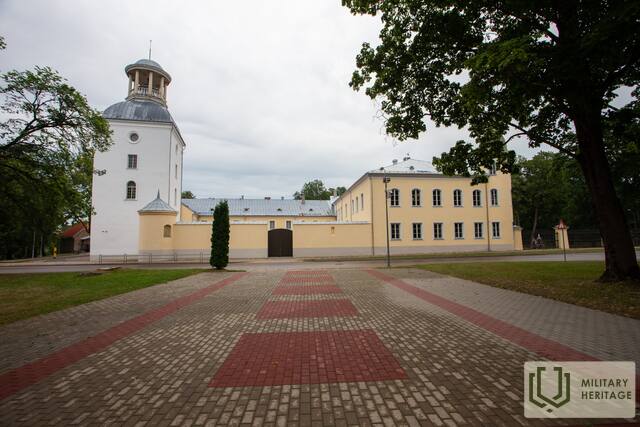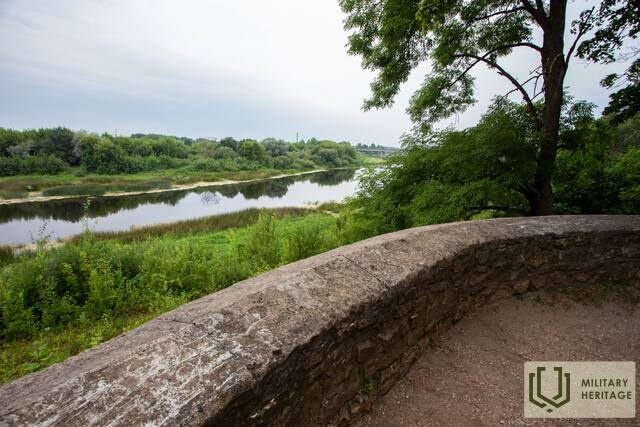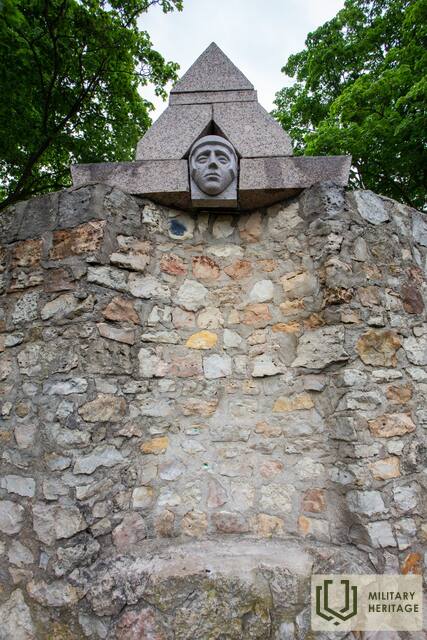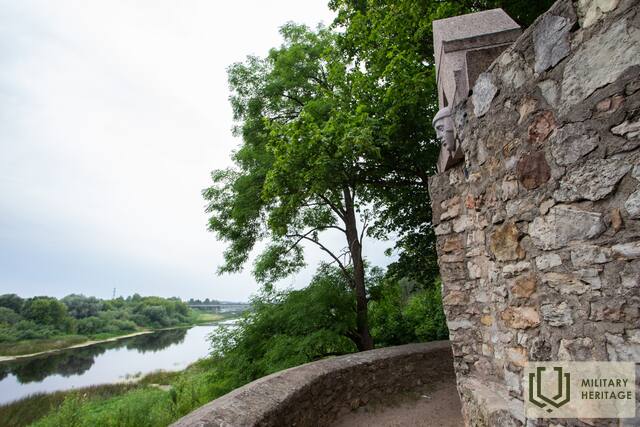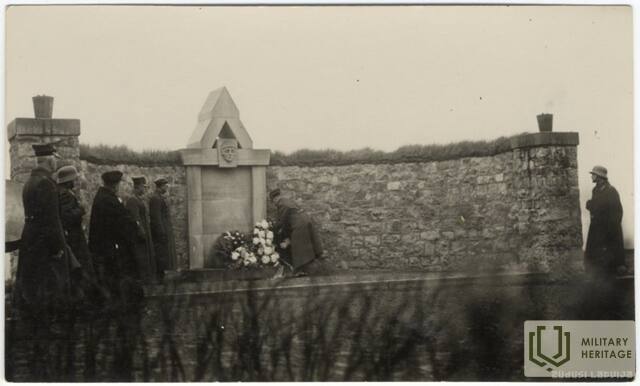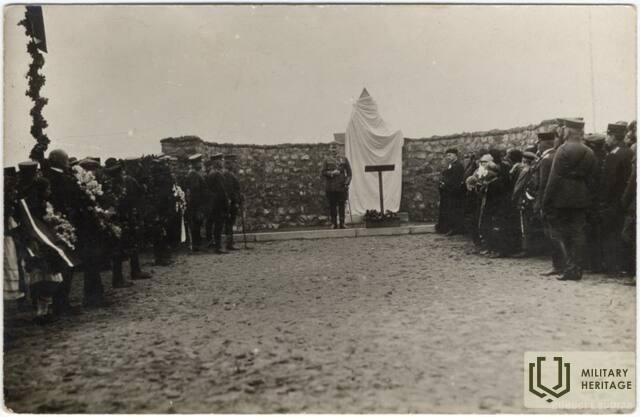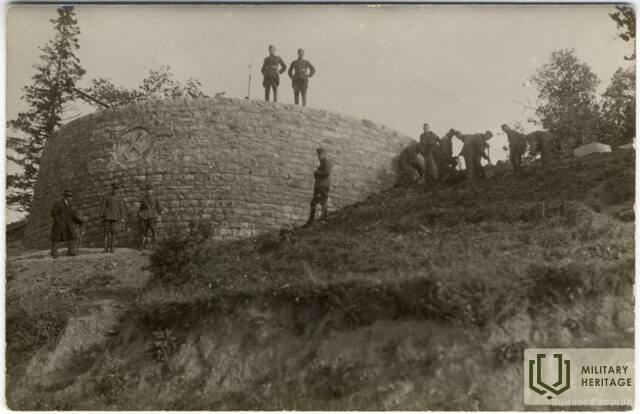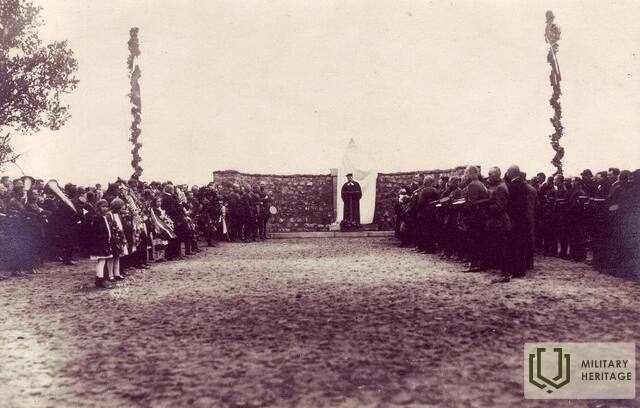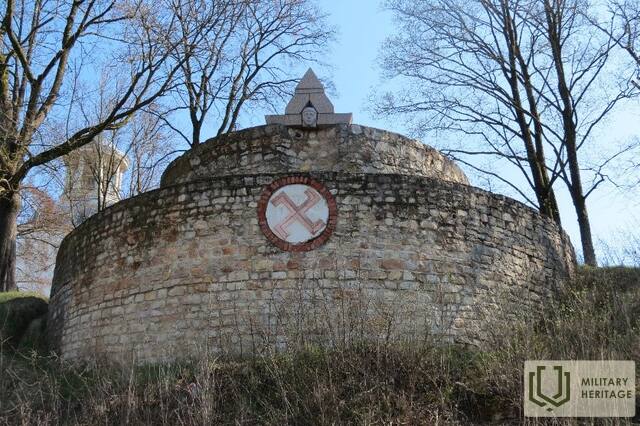Paminklas žuvusiems už Tėvynę 1918–1920 m.
Memorialinė vieta

Įsikūręs Rīgas gatvės pusėje, priešais Krustpilio pilį.
Jėkabpilyje, dešiniajame Dauguvos krante, buvo pastatytas paminklas „Žuvusiems už Tėvynę 1918–1920 m.“, o pasiūlymą pastatyti paminklą Nepriklausomybės kare žuvusiems kariams 1923 m. birželio 12 d. pateikė Latvijos brolių kapinių komiteto Krustpilio skyrius. Paminklui sukurti Krustpilio parapijos valdyba 1923 m. lapkričio 12 d. perdavė Brolių kapinių komitetui akmeninę caro Aleksandro II paminklo dalį prie parapijos valdybos pastato, kur paminklas buvo pastatytas baudžiavos panaikinimo garbei. Latvijos vidaus reikalų ministerija leido Krustpilio Brolių kapinių komiteto Krustpilio skyriui rinkti aukas. Iš viso buvo paaukota 2400 latų, trūko 1200. Juos tikėtasi gauti paminklo atidarymo dieną surengtame turguje ir vakarėlyje.
Paminklo projektas buvo patikėtas architektui Aleksandrui Birzniekui. Architekto planai buvo sukurti paminklą iš vietinės medžiagos – dolomito smeigių. Paminklo tūrį sudarė du koncentriniai, masyvūs dolomito smeigių mūro pusapskritimiai, iš kurių išorinis buvo žemesnis Dauguvos pusėje, įpjautas į krantą ir suformavo terasą. Jo centre buvo raudonų plytų ugninis kryžius. Pagrindinio pusapskritimio centre, kaip altorius, buvo pastatytos granito plokštės su užrašu: „Žuvusiems už Tėvynę 1918–1920 m.“ ir vaizduojančia kylančią saulę virš Dauguvos bangų, įrėmintomis latviškais ženklais. Centrinę paminklo dalį sudarė skulptoriaus V. Treijaus sukurta žuvusio kareivio kaukė. Laikinasis Latgalos artilerijos pulko vadas pulkininkas leitenantas Jākobsonsas leido paminklo statybai naudoti aikštę dešiniajame Dauguvos krante priešais Krustpilio pilį su sąlyga, kad aikštė liktų Latgalos artilerijos pulko nuosavybe.
1925 m. Latvijos brolių kapinių komiteto Krustpilio skyrius sudarė sutartį su verslininku V. Treija iš Rygos dėl paminklo statybos Krustpilyje. 1925 m. liepos 26 d. buvo padėti paminklo pamatai. 1925 m. rugsėjo 27 d. Krustpilio gyventojams – šventa diena. Paminklas buvo atidengtas ir jį pašventino Krustpilio parapijos liuteronų klebonas K. Skujiņšas. Dalyvavo karo ministras R. Bangerskis, Latgalos artilerijos pulko vadas pulkininkas Kire, generolas K. Berkis ir kt. Paminklui statyti buvo panaudoti 11 kubinių kalkakmenio smeigių, kurie buvo sulaužyti netoli Asotės.
Šeštajame dešimtmetyje paminklas „Žuvusiems už Tėvynę 1918–1920 m.“ buvo iš dalies sunaikintas – nugriauta viršutinė dalis – senovės Latvijos kareivių kaukė, ištepti užrašai, sunaikintas ugninio kryžiaus ženklas. Savo ruožtu, jau Trečiojo atgimimo pradžioje Latvijos liaudies fronto (LTF) Krustpilio skyriaus aktyvistai pirmosiose LTF rajonų konferencijose priimtoje rezoliucijoje įtraukė reikalavimą atkurti paminklą Krustpilyje. Jau 1989 m. lapkričio 11 d. paminklo vietoje buvo surengta atminimo akimirka, kurios metu jekabpiliečiai pagerbė savo Lāčplėšius.
1992 m. pradžioje pradėti paminklo restauravimo darbai. Cėsių komunalinės įmonės gamykloje gaminami reikiamo dydžio ir formos granito gabalai. Granitas apdirbtas pagal E. Nīmanio ir V. Treikmanio brėžinius. Paminklo restauravimo techninę priežiūrą atlieka architektė Māra Steķe. Rygoje skulptorė Inta Berga išliejo paminklo bronzines dalis. Visi darbai buvo finansuojami iš Jekabpilio miesto lėšų. Restauruotą paminklą 1992 m. lapkričio 18 d. pašventino tuometinis Jekabpilio ir Krustpilio evangelikų liuteronų parapijų dekanas Modris Plāte ir Jekabpilio katalikų parapijos kunigas Jānis Bratuškinas.
Jis buvo atidengtas Krustpilyje 1925 m. rugsėjo 27 d. Paminklą suprojektavo architektas Aleksandras Birzenieksas. Ant paminklo iškaltas užrašas „Už tuos, kurie krito net už Tėvynę 1918–1920 m.“. Paminklą 1941 m. iš dalies nugriovė sovietų okupacinė valdžia, o apie 1950 m. – visiškai sunaikino. Paminklas buvo restauruotas 1992 m. lapkričio 18 d.
Panaudoti šaltiniai ir literatūra:
Iluta Bērziņa, Jēkabpilio istorijos muziejaus vyriausioji rinkinių saugotoja




